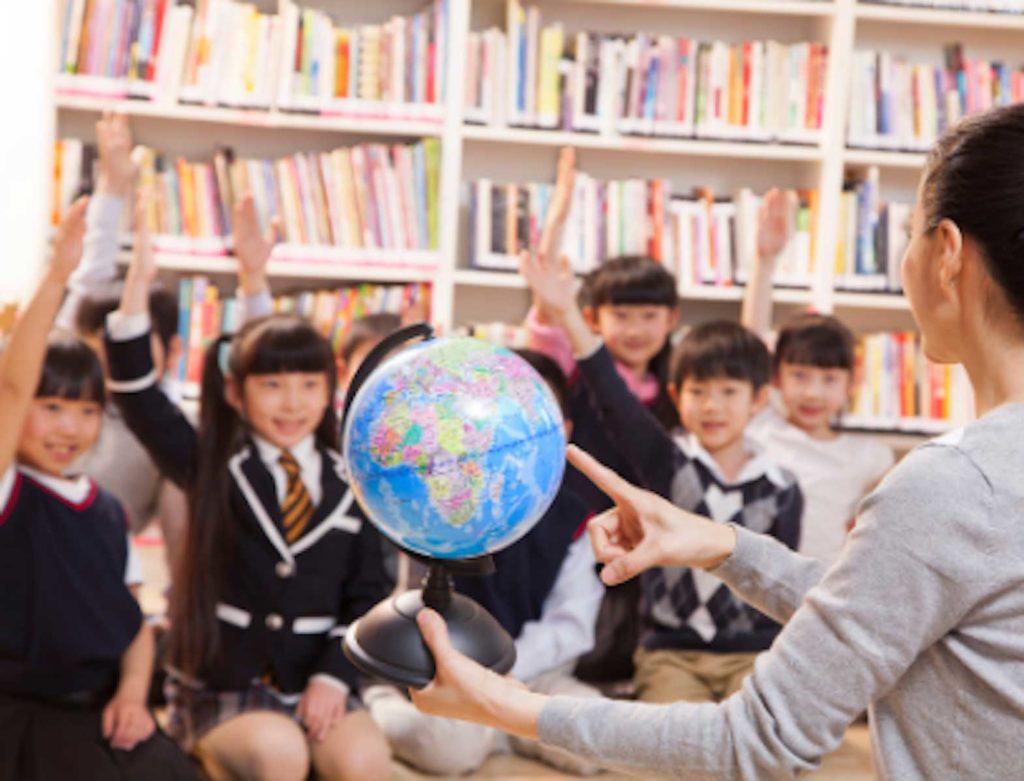A more complete picture of overseas Filipino teachers

Filipinos often mourn the outmigration of teachers and see it as an example of brain drain. Surely it can be disheartening to see some of our best and brightest educators leave the country to teach abroad, but overseas Filipino teachers would say otherwise.
This Teachers’ Month, it is important to celebrate the mobility and achievements of Filipino teachers all over the world. As active contributors to global development, overseas Filipino teachers have presented an image of Filipinos as intellectuals and academics on the world stage. And they have continued to do so even during the pandemic.
Why they migrate
The most obvious incentive for teachers to migrate is income. However, speaking to any overseas Filipino teacher about why they migrated would reveal a plethora of non-financial motives, too.
For example, many teachers choose to work abroad in pursuit of personal growth and professional empowerment. Dr. Rommel, a professor at the University of Brunei Darussalam, said, “Being assessed and judged by international standards keeps me on my toes.” Mr. Klenton, who taught Filipino at the Philippine School in the United Arab Emirates, echoes Dr. Rommel in saying that teaching abroad makes him globally competitive.
Upward mobility is another reason that Filipino teachers migrate. According to Dr. Rommel, it is “easier to be promoted” based on merit while working abroad. As the History & International Studies Department Chair, he enjoys being entrusted with great responsibility by both his colleagues and students in managing administrative work at the University.
Gains in the migration of filipino teachers
Firstly, teachers who work abroad are a testament to the intelligence of the Filipino. By interacting with students and colleagues of different nationalities and cultural backgrounds, Filipino teachers have been ambassadors promoting the reputation of the Philippines in their respective communities abroad. Their students are able to gain a tangible connection with Philippine culture.
Secondly, Filipino teachers breed students who are ready to participate in a globalized world. Educators working abroad tend to take jobs teaching languages such as English and Filipino and tear down communication barriers one student at a time. Ms. Eula, for example, teaches English as an additional language (EAL) in International School Brunei to young children without any prior knowledge of English. In doing so, she provides her students with a support system and empowers them to be better communicators.
Lastly, digitalization in recent years has allowed Filipino teachers to continue advancing education in the Philippines despite being abroad. Dr. Rommel does this by giving talks and lectures online to train educators in the Philippines on teaching Asian history, while Mr. Klenton shares some of his students’ academic submissions on his YouTube channel with over one thousand subscribers.
Teaching in the new normal
Despite these obvious advantages of migration, overseas Filipino teachers have faced serious struggles in working abroad. Challenges unique to the pandemic have pushed them to depend on technology.
First of all, most teachers are now familiar with teaching online, but adjusting to online learning has been especially difficult for teachers with young students. As an early childhood teacher in New Zealand, Ms. Raffy’s students range from 3 months to 5 years old and attend Zoom meetings with parental supervision; she has had to be creative in planning activities that engage not only students but their parents as well.
The popular sentiment among teachers is that face-to-face classes are irreplaceable. And though most schools abroad have opened up in recent months, the emergence of new COVID-19 variants putting children at risk of infection has kept teachers on guard and ready to return to online learning at a moment’s notice.
Next, teachers have had to find new employment altogether. Ms. Belle used to teach at an international school in the United States. But as international students began to return to their home countries during the pandemic, Ms. Belle sought a new job at a language center where she teaches English, Spanish, and Filipino online to adult students from around the U.S.
Finally, the pandemic travel restrictions have separated overseas Filipino teachers from their families back home. Even prior to the pandemic, being away from home was a source of heartache for many migrant workers. These days, visiting home has become even more difficult because of the fluctuating cases and quarantine requirements in the Philippines.
Mr. Klenton tried to return to the Philippines in 2020, but travel restrictions prevented him from doing so. Social media and messaging platforms have provided some comfort, but Mr. Klenton shared, “[My] mama & papa always cry when we have.”
This article is made possible through the insights provided by the following overseas Filipino teachers: Mrs. Maribelle Balazuela, Mrs. Rafaela Remo-Obnial, Mr. Klenton Sibelina, Dr. Rommel Curaming, and Mrs. Eulalia Curaming. Keep posted on CMA’s social media pages to hear more about their stories.

